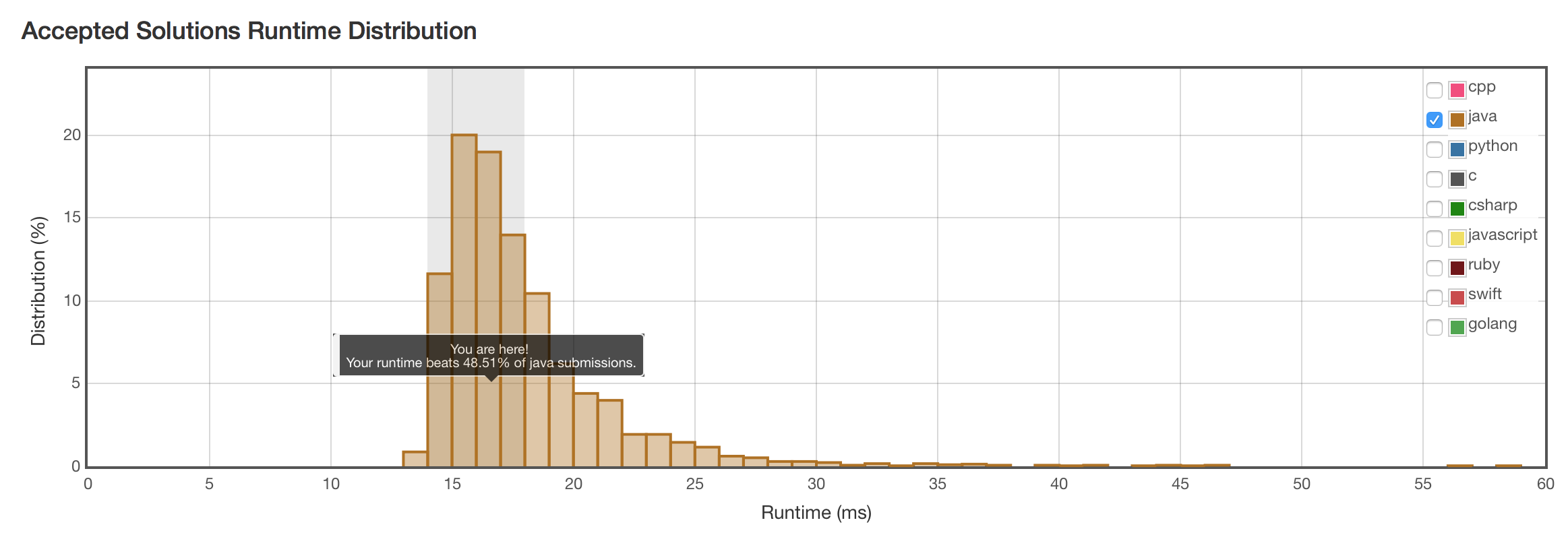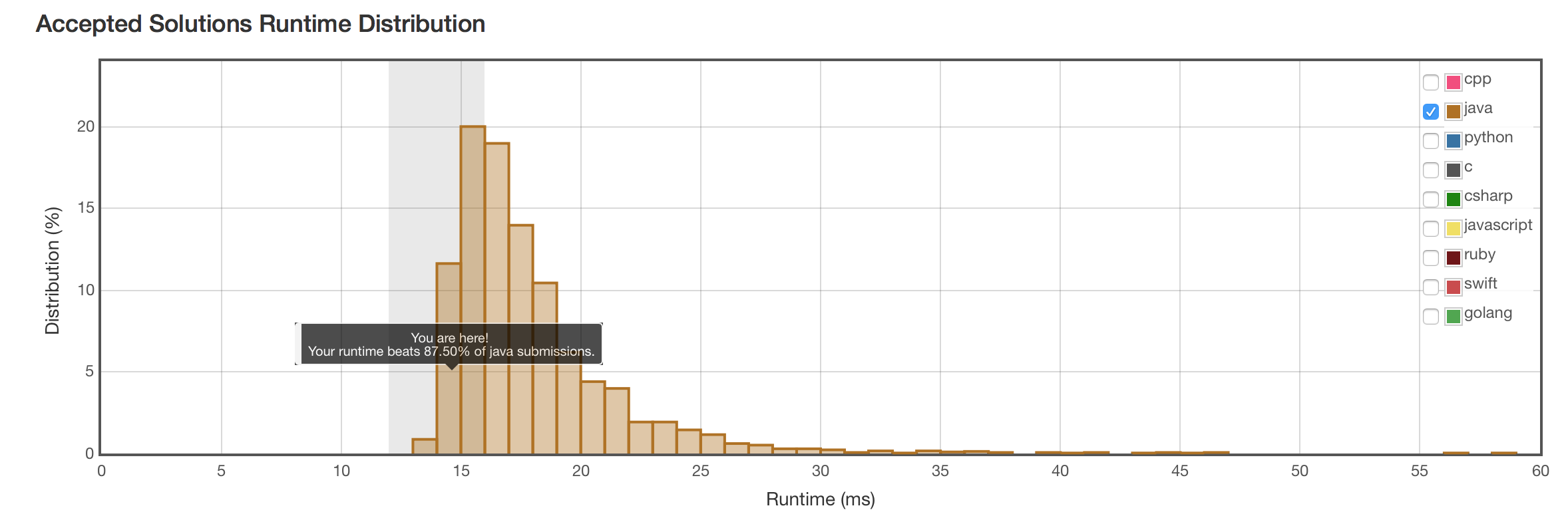主要收获
当有边界情况需要特殊处理的时候,加一个哨兵sentinel,会让特殊情况的逻辑一般化,代码更加整洁。
题目
Given a linked list, remove the nth node from the end of list and return its head.
For example,
Given linked list: 1->2->3->4->5, and n = 2.
After removing the second node from the end, the linked list becomes 1->2->3->5.
Note: Given n will always be valid. Try to do this in one pass.
维护一个额外List,\(O(n)\)
如果要删除第n个元素,操作的是第n-1个元素的指针。单向链表的问题是:回退不到上一个元素。用空间换时间的话,可以额外维护一个列表,储存单向链表中每个元素的引用。接下来就可以用\(O(1)\)的随机访问,找到目标元素的前一个元素。总体复杂度就是遍历一遍的开销\(O(n)\)。 为了逻辑更简单,在链表开头,加了一个哨兵元素。
代码
/**
* Definition for singly-linked list.
* public class ListNode {
* int val;
* ListNode next;
* ListNode(int x) { val = x; }
* }
*/
public class Solution {
public ListNode removeNthFromEnd(ListNode head, int n) {
List<ListNode> ref = parseListNode(head);
int size = ref.size();
if (size-1 < n) { return head; } // length < n
int prevIndex = size - n - 1; // find the previous element
ListNode prevNode = ref.get(prevIndex);
prevNode.next = prevNode.next.next;
return ref.get(0).next; // the 1st node after the sentinel
}
public List<ListNode> parseListNode(ListNode head) {
List<ListNode> result = new ArrayList<>();
ListNode sentinel = new ListNode(0); // sentinel
sentinel.next = head;
result.add(sentinel);
ListNode cursor = head;
while (cursor != null) {
result.add(cursor);
cursor = cursor.next;
}
return result;
}
}
结果

不使用额外空间 \(O(n)\)
这次不使用额外的List来保存每个元素的指针。而是只维护两个指针。一个快指针,一个慢指针。两者之间保持间隔n个元素。同样,为了让边界特殊情况一般化,在List开头插入了一个哨兵元素。
代码
/**
* Definition for singly-linked list.
* public class ListNode {
* int val;
* ListNode next;
* ListNode(int x) { val = x; }
* }
*/
public class Solution {
// 不使用额外空间
public ListNode removeNthFromEnd(ListNode head, int n) {
ListNode sentinel = new ListNode(0);
sentinel.next = head;
ListNode slow = null, fast = sentinel;
int cursor = 0; // index of fast
while (fast != null) {
fast = fast.next;
if (slow != null) { slow = slow.next; }
if (cursor - n == 0) { slow = sentinel; } // slow和fast之间间隔n格距离
cursor++;
}
if (slow != null) {
slow.next = slow.next.next;
}
return sentinel.next;
}
}
结果
银弹。
